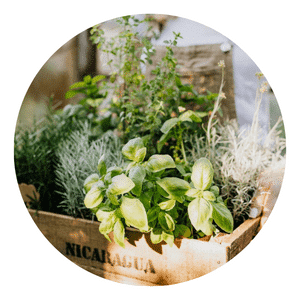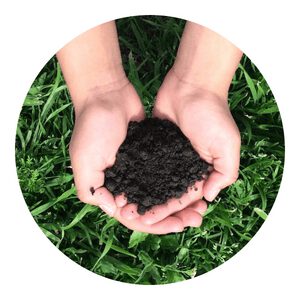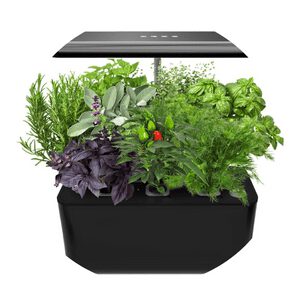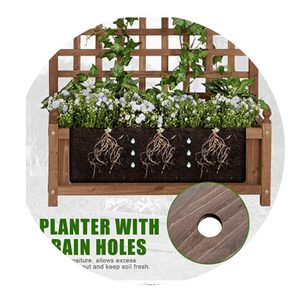How To Grow Organic Raspberry
Raspberries are a delicious and nutritious fruit that can be enjoyed fresh or preserved.
Growing your own organic raspberries is an easy and rewarding way to ensure you have access to these tasty treats year-round.
With the right soil, adequate water, and plenty of sunshine, anyone can produce a successful raspberry crop.
Organic gardening also has the added benefit of avoiding the use of synthetic chemicals and fertilizers.

Raspberry Menu
Benefits of growing organic raspberries
Organic raspberries are a deliciously sweet and nutritious fruit that can be grown in any garden.
Not only do they taste amazing, but growing organic raspberries also has some great health benefits.
Eating organic raspberries can reduce inflammation and improve digestion, as well as give you an excellent source of vitamin C, fiber, potassium and antioxidants.
Plus, there are lots of ways to enjoy them – from adding them to smoothies or cereal for breakfast to snacking on them straight from the bush!
Growing your own organic raspberries is a great way to get the most out of this super fruit.
You’ll save money by not buying expensive grocery store varieties, plus you’ll have peace of mind knowing exactly where your food comes from.
Selecting a site for planting
The second step in growing organic raspberries is selecting a site for planting.
It’s important to choose a spot that gets full sun and has well-drained soil, as these two factors are essential for the fruit’s growth and health.
To determine whether the soil has proper drainage, it should be tested before planting.
Areas with standing water or poor drainage should be avoided, as they can cause root rot in raspberries.
The site should also get at least six hours of sunlight each day; otherwise, the plants will not produce many berries.
Additionally, if possible the ground should be amended prior to planting by adding compost or manure to the soil in order to add nutrients for optimal raspberry growth.
By taking these steps ahead of time, gardeners will have a much better chance of getting healthy and productive raspberry plants!
Considerations for location
When it comes to growing organic raspberries, location is key.
Selecting the right spot for a raspberry patch is an essential part of the process, and there are several factors that should be taken into consideration.
Sun exposure is one of the most important considerations for a successful raspberry patch.
Raspberries need full sun for at least six hours each day in order to produce healthy crops; therefore, it’s best to select a spot that receives ample sunlight throughout the day.
Preparing the soil
Taking the time to prepare the soil will ensure your raspberries thrive and produce excellent yields come harvest time.
The first step in preparing the soil is adding compost rich in organic matter.
Compost provides nutrients that raspberries need to grow strong and healthy while improving drainage and water-holding capacity of the soil.
It should be added at least six inches deep as well as spread out over the entire area of your raspberry patch before planting.
In addition to adding compost, it is also important to test your soil’s pH levels prior to planting organic raspberries.
Raspberry grows so sweet and tender, Organically grown it is a wonder. It's a fruit that abundantly gives us joy, Loved by all, the strawberry envy boy. Fills our tummies in early June, Rich in nutrients it's organic rhapsody unheard of. Transport ourselves to its heavenly land, Where healthy and fresh Raspberries will expand!
Chappy The Gardener
Choosing a growing method
The next step in the process of growing organic raspberries is choosing a growing method.
There are a few different ways to grow raspberries; this decision will depend on factors such as climate, soil type, and the amount of space available.
One popular way of growing raspberries is by planting them in raised beds or mounds.
This method works well in areas with wet soils, as it helps improve drainage and aeration for optimal root growth.
Additionally, raised beds can help protect plants from weeds and pests, ensuring maximum yield potential with minimal effort.
For gardeners who want to conserve space or work with limited land area, container-grown plants are also an option for raspberry cultivation.
Traditional soil-based method
Organic raspberry production has been around for centuries, but more recently, farmers are turning to traditional soil-based methods over chemical fertilizers and other modern techniques.
The traditional soil-based method is an effective way to grow healthy raspberries without the use of harsh chemicals.
This method relies on natural processes such as adding organic matter and improving the structure of the soil to promote better aeration and water retention.
Organic matter can be added in the form of compost or manure.
Cover crops like clover or grass can be planted between rows of raspberry plants to increase humus levels in the soil and help retain moisture.
Additionally, this method also encourages beneficial organisms like earthworms that improve nutrient availability in the soil, which helps promote healthier root growth and higher yields.
Raised Beds
Growing organic raspberries in raised beds can be a great way to grow your own delicious, healthy fruit at home.
Here are some tips for successful raspberry growing in raised beds:
Select a sunny location: Raspberries prefer full sun (at least 6 hours of direct sunlight per day) and well-draining soil.
Choose a location that meets these requirements, and consider the direction of the sun to ensure that the plants will receive enough light throughout the day.
Prepare the raised bed: Before planting, make sure that the raised bed is in good condition and well-draining.
Add compost or well-rotted manure to the soil to enrich it and improve drainage. If necessary, adjust the pH of the soil to a range of 6.0-6.5, which is ideal for raspberries.
Choose the right raspberry plants: There are two types of raspberries: summer-bearing and fall-bearing.
Summer-bearing raspberries produce fruit on canes that grew the previous year, while fall-bearing raspberries produce fruit on both old and new canes.
Choose a variety that is well-suited to your location and desired harvesting season.
Plant the raspberry plants: When planting raspberries in a raised bed, space the plants 2-3 feet apart in rows that are 4-6 feet apart.
Make sure to dig a hole that is large enough to accommodate the root ball of the plant, and gently loosen the roots before planting.
Water the plants well after planting, and consider mulching around the base to help retain moisture and suppress weeds.
Care for the raspberry plants: Raspberries need regular watering, especially during dry periods or during the establishment period after planting.
Water deeply to encourage deep root growth, and avoid wetting the foliage to prevent fungal diseases.
In terms of fertilization, it is generally recommended to apply compost or well-rotted manure in the spring and again in the fall, and to use a organic fertilizer (such manure) according to label instructions during the growing season.
Prune and train the raspberry plants: Pruning and training raspberry plants can help encourage new growth, remove diseased canes, and improve the overall health and productivity of the plants.
Techniques for pruning and training will vary depending on the type of raspberry plants you have.
Protect the raspberry plants in winter: Raspberry plants are hardy, but they may need some protection during the winter months to ensure their survival.
Mulching around the base of the plants can help insulate the roots and protect them from extreme cold.
Pruning can also help remove damaged canes and encourage new growth in the spring.
By following these steps, you can successfully grow organic raspberries in a raised bed and enjoy fresh, healthy fruit all season long.

Hydroponic system
Growing organic raspberries hydroponically can be a rewarding and sustainable way to produce your own fruit at home.
Here are some tips for successful raspberry growing using a hydroponic system:
Choose a suitable hydroponic system: There are several different types of hydroponic systems available, each with its own set of benefits and challenges.
Some common options include nutrient film technique (NFT), deep water culture (DWC), and aeroponics.
Consider the size and space available, as well as the specific needs of raspberry plants, when selecting a hydroponic system.
Select the right raspberry plants: It is important to choose raspberry plants that are well-suited to hydroponic growing.
Some varieties may be more adaptable to this type of system than others.
Consult with a local nursery or a hydroponic supplier to find the best options for your location and goals.
Set up the hydroponic system: Follow the specific instructions for your chosen hydroponic system to properly set it up and prepare it for planting.
This may involve assembling the system, filling it with water and nutrients, and ensuring that it is properly calibrated and functioning.
Plant the raspberry plants: In a hydroponic system, raspberry plants are typically grown in containers filled with a growing medium, such as coconut coir or perlite. When planting, follow the specific recommendations for your chosen system in terms of spacing and planting techniques.
Care for the raspberry plants: Proper watering and fertilization are essential for the health and growth of raspberry plants in a hydroponic system.
Watering should be done according to the specific requirements of your hydroponic system (e.g. nutrient film technique, deep water culture). It is generally recommended to monitor the pH and nutrient levels of the water solution regularly and to adjust as needed.
Fertilization can be done using a balanced nutrient solution specifically formulated for hydroponics, or by adding individual nutrients (such as nitrogen, phosphorous, and potassium) according to the needs of your plants.
Harvest and store the raspberries: When the raspberries are fully ripe, they can be harvested by gently pulling them off the plant.
Aquaponic system
Growing organic raspberries aquaponically can be a sustainable and efficient way to produce your own fruit at home.
Aquaponics combines hydroponics (growing plants in water) with aquaculture (raising fish in tanks) to create a symbiotic system where the waste produced by the fish provides nutrients for the plants, and the plants filter and clean the water for the fish.
Here are some tips for successful raspberry growing using an aquaponic system:
Choose a suitable aquaponic system: There are several different types of aquaponic systems available, each with its own set of benefits and challenges.
Some common options include raft systems, media bed systems, and nutrient film technique (NFT) systems.
Consider the size and space available, as well as the specific needs of raspberry plants and the type of fish you plan to raise, when selecting an aquaponic system.
Select the right raspberry plants: It is important to choose raspberry plants that are well-suited to aquaponic growing.
Some varieties may be more adaptable to this type of system than others.
Consult with a local nursery or an aquaponic supplier to find the best options for your location and goals.
Set up the aquaponic system: Follow the specific instructions for your chosen aquaponic system to properly set it up and prepare it for planting.
This may involve assembling the system, filling it with water and adding fish, and ensuring that it is properly calibrated and functioning.
Plant the raspberry plants: In an aquaponic system, raspberry plants are typically grown in containers filled with a growing medium, such as coconut coir or gravel.
When planting, follow the specific recommendations for your chosen system in terms of spacing and planting techniques.
Care for the raspberry plants and fish: Proper management of the fish and their waste is essential for the success of an aquaponic system.
It is important to maintain a healthy population of fish and to monitor the pH and nutrient levels of the water to ensure that the plants are receiving the necessary nutrients.
It is generally not necessary to add additional fertilizers in an aquaponic system, as the nutrients produced by the fish should be sufficient for the plants.
Harvest and store the raspberries: When the raspberries are fully ripe, they can be harvested by gently pulling them off the plant.
Store fresh raspberries in the refrigerator or freeze them for later use.
By following these steps, you can successfully grow organic raspberries using an aquaponic system and enjoy fresh, healthy fruit all season long.
Comparison of benefits and challenges of each method
The most popular method for growing organic raspberries is through the use of raised beds.
Raised beds allow for better drainage and temperature control, as well as making it easier to keep weeds away from the plants.
In addition, they also give you better access to your plants so that you can monitor their health more closely and respond quickly if any issues arise.
The main challenge with this method is that it requires regular maintenance in order to ensure healthy growth rates and production levels.
Choosing and purchasing raspberry organic seeds
Choosing and purchasing raspberry organic seeds is the fourth step in successfully planting and growing an organic raspberry patch.
When selecting the right type of seed, it is important to consider where the planter would like to grow their raspberries, as some varieties prefer different types of soil or climates.
Some raspberries can be grown from existing plants, while others require starting from seed.
First, pick a variety that will do well in the climate and soil conditions of the area where it will be planted.
Second, check if any special pre-treatments are needed before planting; some seeds may need stratification or scarification prior to sowing for optimal results.
Types of raspberries
Organic raspberries are an excellent addition to any garden, as they can be grown in both fall and summer months.
However, there are two main types of raspberry varieties: summer-bearing and fall-bearing.
Summer-bearing varieties produce fruit on the current season’s canes, which means that you have to prune out last season’s crop after it is finished producing.
On the other hand, fall-bearing varieties produce fruit on both old and new canes allowing for multiple harvests throughout the growing season.
Planting either of these types organically is easy if you know what to do!
Planting and caring
When planting your raspberry bushes, it’s important to research the best varieties for your area and choose plants that have been certified as organic by a trusted source.
Planting should be done during late winter when the soil is not frozen or overly wet from spring rains.
Be sure to include plenty of compost or manure in the soil before planting; this will nourish roots and boost growth throughout the season.
Proper spacing and planting techniques
When using a matted row system, space each plant about 18-24 inches apart with rows about five feet apart.
For an individual-plant system, space plants further apart at 24-36 inches between each one, with rows spaced six feet apart.
When planting organic raspberry bushes in either system, make sure that the soil is well drained and has plenty of organic matter mixed into it before you transplant them from their pots or trays.
Controlling pests and diseases organically
Here we will look at how to grow raspberries organically and the best ways of minimizing the impact of pests and diseases on your crop.
Organic gardening focuses on building a healthy soil which provides essential nutrients for plant growth while also helping to reduce pest pressure.
Applying mulch around the base of your raspberry canes helps prevent weeds from growing and reducing water loss from the soil.
Additionally, creating a habitat for beneficial insects such as ladybugs and lacewings can help increase their populations, naturally controlling damaging insect populations before they become a problem.
Organic Fertilizer
There are many types of organic fertilizers that can be used to nourish and support the growth of raspberry plants.
Here are five options to consider:
Compost: Compost is a rich, nutrient-dense soil amendment made from decomposed organic matter. It can be applied to the soil around raspberry plants to provide a wide range of nutrients, including nitrogen, phosphorous, and potassium.
Manure: Well-rotted manure, such as cow, horse, or chicken manure, can be applied to the soil around raspberry plants to provide a slow-release source of nutrients. Manure should be aged or composted before use to reduce the risk of burning the plants.
Blood meal: Blood meal is a high-nitrogen organic fertilizer made from dried, ground animal blood. It can be applied to the soil around raspberry plants to provide a quick boost of nitrogen, which is essential for healthy foliage growth.
Bone meal: Bone meal is a slow-release organic fertilizer made from ground animal bones. It is a good source of phosphorous, which is important for root growth and fruiting.
Kelp meal: Kelp meal is a organic fertilizer made from ground seaweed. It is a rich source of micronutrients, including iodine, iron, and zinc, and can be applied to the soil around raspberry plants to promote overall health and growth.
Pruning and training
Pruning is an important part of caring for an organic raspberry plant.
In general, it’s best to remove old canes after harvesting and cut back any new suckers.
This will help prevent overcrowding and ensure that air circulates properly throughout the bush.
It’s also important to look out for any potential disease or pest problems which could be identified by dead or yellow leaves on the stems or branches.
Protecting your raspberry plants in winter
Growing and maintaining raspberry plants can be a rewarding pastime for any green-thumbed gardener, providing not only delicious fruit but also beautiful foliage throughout the year.
But with colder months comes certain challenges, and raspberry plants require special care to survive the wintertime.
Firstly, in late autumn or early winter when temperatures start getting lower, you should move your raspberry plants into an area of your garden that is sheltered from strong winds or frost.
If possible consider covering them with fleece, as this will help keep the ground beneath them warm and dry, thus preventing freezing.
Secondly, it’s important to make sure that your raspberry plants have plenty of access to nutrients during this period – so be sure to give them a good feed at least once a month.
Mulching to insulate the roots
Mulching is a great way to protect the roots of organic raspberry plants.
It helps ensure they have the insulation they need to stay healthy and continue to bear fruit.
Not only does mulching help retain moisture in the soil, it also helps control weeds, which can rob young raspberries of nutrients and water.
Organic mulches are readily available at most garden centers, and come in a variety of materials like straw, hay, shredded bark or composted leaves.
To apply the mulch properly around an established raspberry plant, spread 1-2 inches of material over the root zone without covering up any green foliage or stems.
This will help insulate the roots from temperature fluctuations while maintaining enough moisture for optimal growth. For newly planted raspberries, feel free to add up to 4 inches of mulch once all danger of frost has passed in your area.
Pruning to remove damaged canes
Pruning is an essential element to growing organic raspberries.
Pruning removes damaged canes and promotes new, healthy growth. Pruning not only improves the overall health of your raspberry patch but also encourages maximum yield of fruit. Removing any dead or diseased canes helps to keep your garden free of disease, pests, and other hazards.
To prune properly, you should start by cutting off any dead wood from the base of the plant.
This will allow for more airflow and light penetration so that new canes will have a better chance at growth. If needed, you may also need to thin out dense patches in order to promote air circulation and reduce competition between plants for resources like water and nutrients.
Protecting plants from animals
Organic gardening is a great way to enjoy natural produce and preserve the earth’s resources.
While there are many benefits to growing organic fruits like raspberries, there are also some challenges.
One of the biggest obstacles when it comes to growing organic raspberries is protecting them from animals that may be attracted to their sweet taste.
Luckily, there are several methods you can use to protect your plants such as netting or fencing.
Netting is an affordable and easy-to-install solution for keeping animals away from your raspberry plants. It works by forming a barrier between the plants and any potential predators while still allowing sunlight and water in.
Fencing is another option which provides more protection from bigger animals such as deer or rabbits, but requires a bit more time and effort for installation.
Harvesting and storing your raspberries
Harvesting and storing your raspberries once they have been grown can be a fun and easy process!
When the raspberries are fully ripe, usually around 6-8 weeks after planting, you will be able to harvest them.
Make sure to pick them in the early morning or late evening when it is cooler.
A good way to tell if the berries are ready is by their color; when they are dark red or black, they are usually ripe. When harvesting, be sure to wear gloves since raspberry thorns can prick your skin.
Once you have picked your raspberries, store them in airtight containers such as sealable jars or plastic bags in the refrigerator for up to one week.
If you would like your berries to last longer than that, freeze them on a parchment-lined baking sheet and transfer them into an airtight container once frozen solid.
Common problems and solutions
Organic raspberry farming is a rewarding and popular activity for people of all ages. It requires a little patience, but the reward of fresh and delicious raspberries makes it well worth it!
While growing organic raspberries can be an enjoyable experience, there are some common problems that you may face.
To help you get your raspberry patch up and running with minimal hassle, we’ve put together a list of the most common problems along with our best solutions to keep your plants in top condition.
From pests and diseases to incorrect watering habits, this article will guide you through each issue so that you can nurture your organic raspberry patch into a sweet success!
Dealing with pests
The first step in IPM is understanding the pests that may be attacking your raspberries.
Identifying which insect or disease is causing damage is essential in formulating an appropriate response.
To do this, you will need to monitor your plants and inspect them regularly for signs of infestation or damage.
Once the culprit has been identified, you can begin controlling it with safe and effective treatments such as companion planting, trapping, and biological control.
Managing diseases
The first step to successfully manage diseases in an organic raspberry garden is providing proper airflow around the plants.
Good air circulation means less humidity around the plants which reduces moisture levels that are conducive for disease development.
Additionally, good air circulation helps prevent pests from attacking your raspberry bushes by minimizing hiding spots for them.
It also allows more sunlight to reach the leaves, helping with photosynthesis and overall growth of the plants.
Another way to effectively manage diseases when growing organic raspberries is by avoiding overhead watering as much as possible.
sit amet, consectetur adipiscing elit. Ut elit tellus, luctus nec ullamcorper mattis, pulvinar dapibus leo.
Tips for successful raspberry growing
There are several key factors to consider when striving for success in growing raspberry plants.
Choose the right variety: Different varieties of raspberries are suited to different climates and growing conditions. Choose a variety that is well-suited to your location and desired harvesting season.
Plant in well-draining soil: Raspberries prefer well-draining soil and will not tolerate standing water. Make sure to plant in soil that drains well and consider using raised beds or mounds to improve drainage if necessary.
Provide adequate sun and water: Raspberries need at least 6 hours of direct sunlight per day and regular watering, especially during dry periods or during the establishment period after planting. Water deeply to encourage deep root growth, and avoid wetting the foliage to prevent fungal diseases.
Fertilize appropriately: Use compost or well-rotted manure in the spring and fall, and a organic fertilizer (bone/blood meal) during the growing season according to label instructions. Monitor the soil nutrient levels and adjust fertilization as needed to ensure that the plants are receiving the necessary nutrients.
Prune and train the plants: Pruning and training raspberry plants can help encourage new growth, remove diseased canes, and improve the overall health and productivity of the plants. Techniques for pruning and training will vary depending on the type of raspberry plants you have.
Protect the plants in winter: Raspberry plants are hardy, but they may need some protection during the winter months to ensure their survival. Mulching around the base of the plants can help insulate the roots and protect them from extreme cold. Pruning can also help remove damaged canes and encourage new growth in the spring.
By following these tips, you can give your raspberry plants the best possible chance for success and enjoy a bountiful harvest of fresh, healthy fruit.
In conclusion, growing organic Raspberries is a rewarding and satisfying experience.
It requires minimal space, minimal investment, and minimal effort to get started.
With patience, dedication, and appropriate care, you can successfully grow your own high-quality organic Raspberries.
Not only will you have delicious fruits to enjoy for years to come, but you will also be doing your part in contributing to the growing demand for organic produce.
So what are you waiting for?
Click To Grow
Helps Us Grow – Share If You Like






















